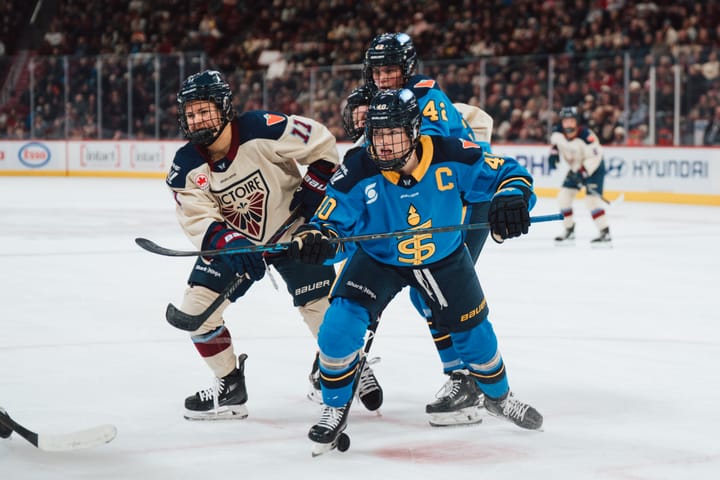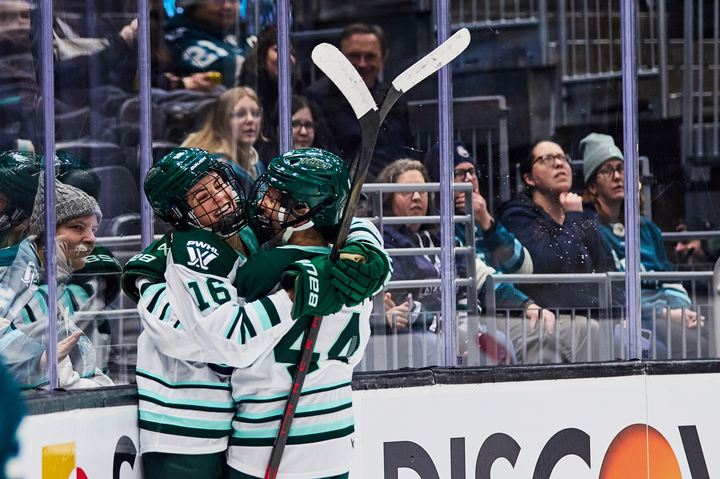PHF Salary Cap Reaches New High: Will Double to $1.5 Million for 2023-2024 Season
Historic salary cap represents increased investment in players
On Wednesday, the Premier Hockey Federation announced that it will double the salary cap for each of its seven teams to $1.5 million for season nine. The increase will come in the second year of the commitment by the Board of Governors to invest $25 million directly in its players over three years. The first year of that commitment more than doubled the cap to $750,000 from $300,000 per team in 2021-2022.
“This historic salary cap increase reflects the strength of our league and developing business model, and supports an enhanced player experience that over the last year has introduced full healthcare benefits, facility upgrades, league expansion, and a record 84-game schedule,” PHF Commissioner Reagan Carey said Wednesday morning.
Currently, the PHF has a salary floor of $562,500, or 75% of the salary cap. The league has already seen historic highs in salaries for players, with 2021 league MVP Mikyla Grant-Mentis signing a landmark one-year deal for $80,000 with the Buffalo Beauts. Salaries of long-time players reflect the financial growth and increase in salary stability over the years.
Some numbers for your consideration.
— Mike Murphy (@DigDeepBSB) November 2, 2022
Jillian Dempsey.
2015-16| BOS$10,500
2016-17 | BOS$13,000
2022-23| BOS$40,000 (2 years)
Kaleigh Fratkin.
2015-16| CTW$20,000
2016-17| NYR$19,500
2019-20| BOS$11,000
2022-23| BOS$57,500
For the 2022-2023 season, teams are required to have at least 20 contracts and no more than 25 contracts. Spending to the floor on 25 contracts, the average salary would be $22,480, and spending to the cap on 20 contracts, the average salary would be $37,500. Per the league’s release, all seven teams are spending over the cap floor, and the minimum salary is set at $13,500 to accommodate players who are unable to commit to the full season of team activities.
The league minimum and salary floor have not been announced for the 2023-2024 season, but if the 75% cap requirement and roster requirements were to remain the same from this season, the cap floor/max contract average salary would be $45,000, and the whole cap/minimum contract average salary would be $75,000.
Even if the PHF continues to have a lower league minimum in order to accommodate player and roster flexibility, these numbers represent significant and historic increases in the world of women’s hockey. A few years ago, no more than a few dozen players in North America might hope to make $45,000 in one season, and vanishingly few outside of national team players could demand such a salary. When players are paid more, they can reduce or eliminate their commitments to other paying work and focus on their sport, increasing the level of play across the board. This season, as the PHF salary cap more than doubled from last year, we have seen a notable increase in the talent drawn from across the globe, and a higher level of play as a result. Raising the cap to $1.5 million will undoubtedly show a further increase in the level of competitive play in the league.
There are many questions to be answered in the upcoming months. Specifics on salary, roster requirements, term lengths, and non-salary expenditures must be provided. Investments in infrastructure to support the growth of the league must come alongside this announcement. What salary increases will mean for players outside the United States and Canada, who have struggled to obtain visas to play in the PHF this season and in previous seasons, must be understood and disseminated to interested players. The extent to which the increased salary caps will be skewed towards players who can demand a higher percentage of a team’s money is yet to be seen, and will affect the options for all players as they look to identify the right fit for them.
The Ice Garden will continue to question and explore the significance of these historic changes as this story develops.





Comments ()